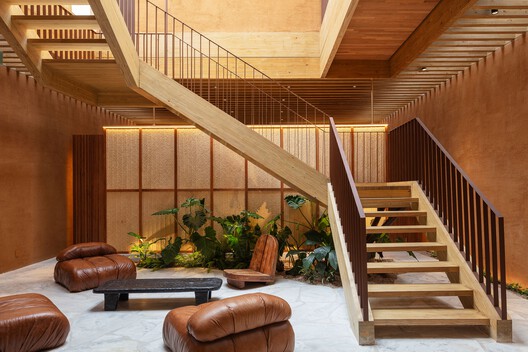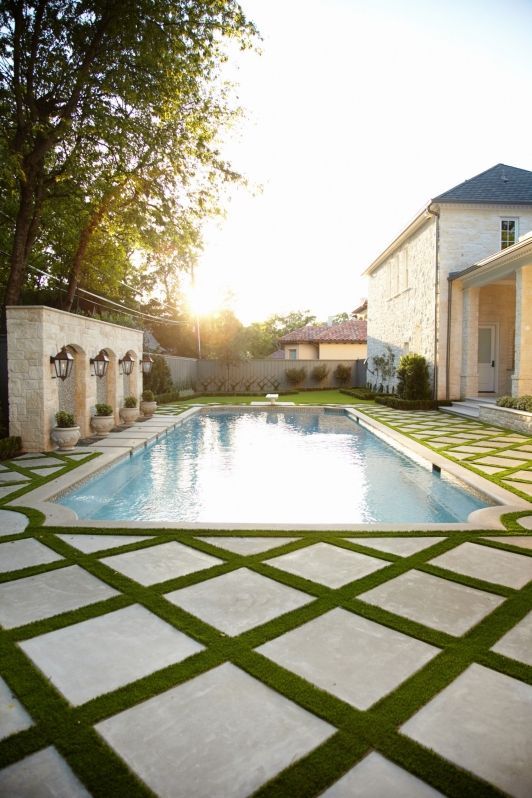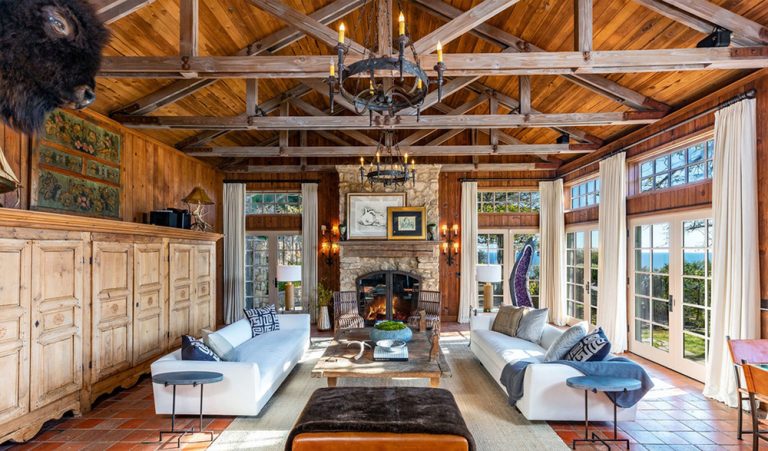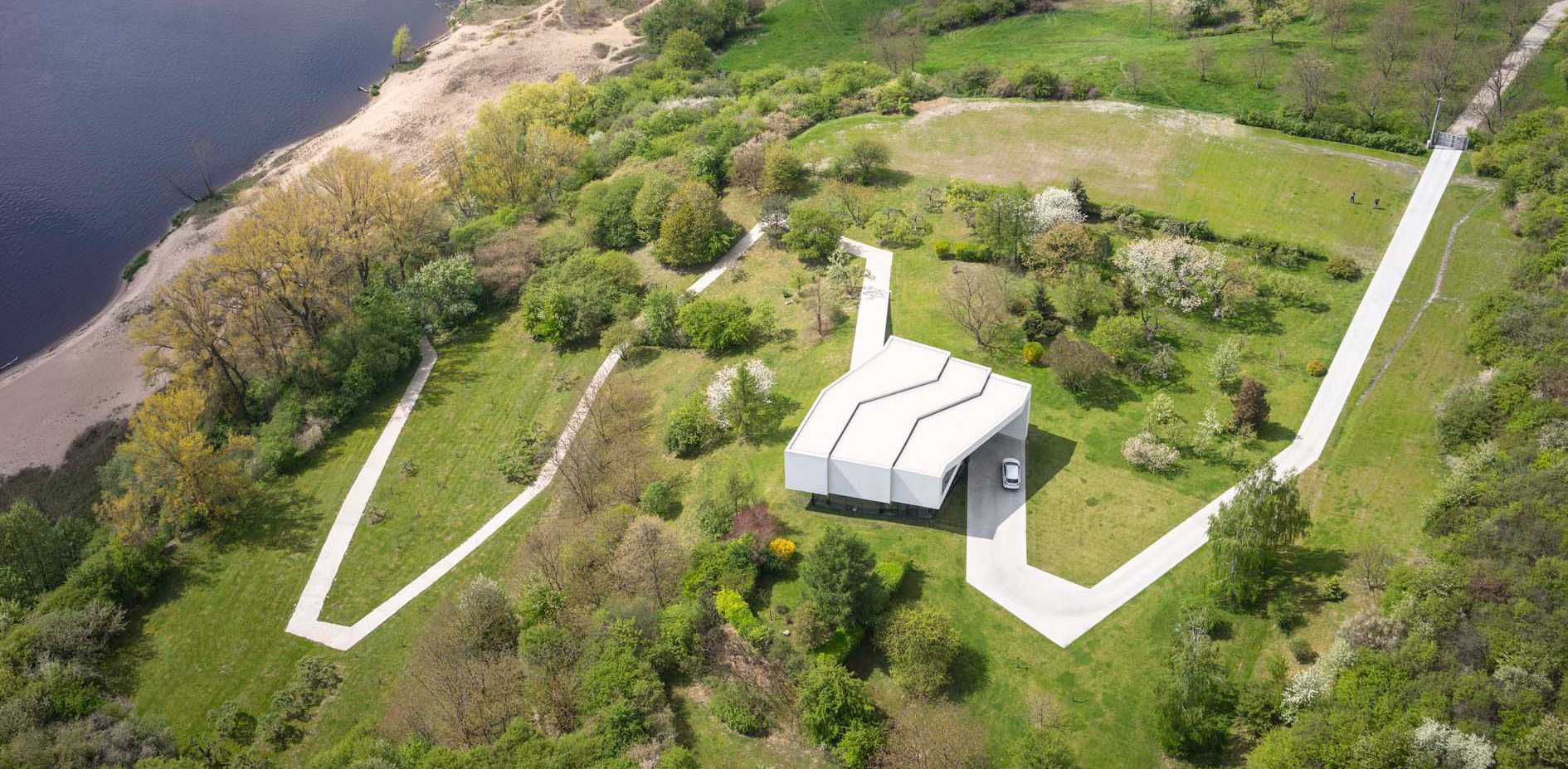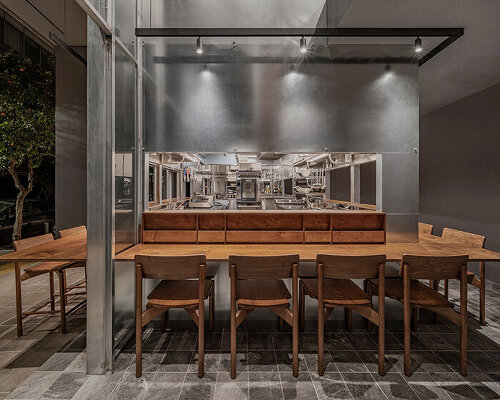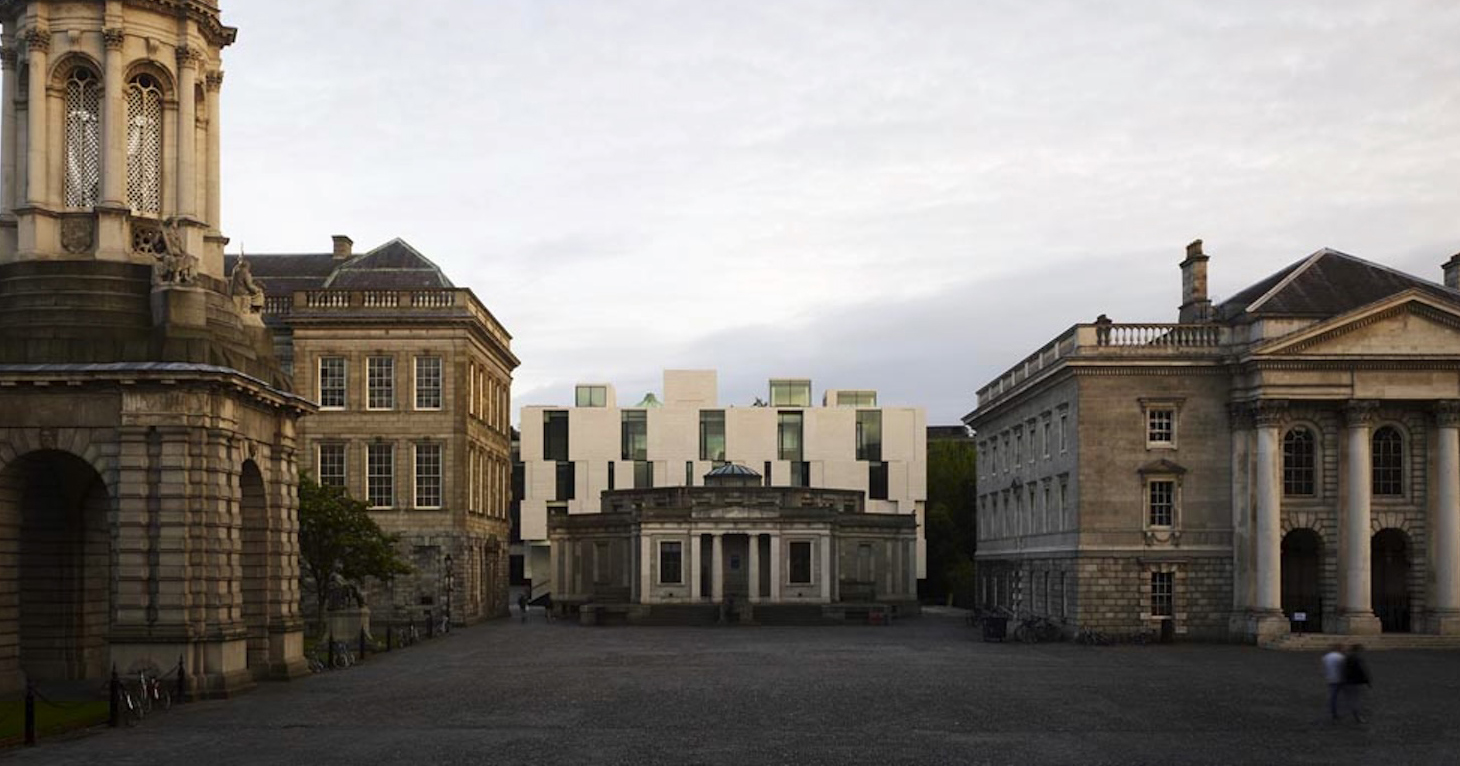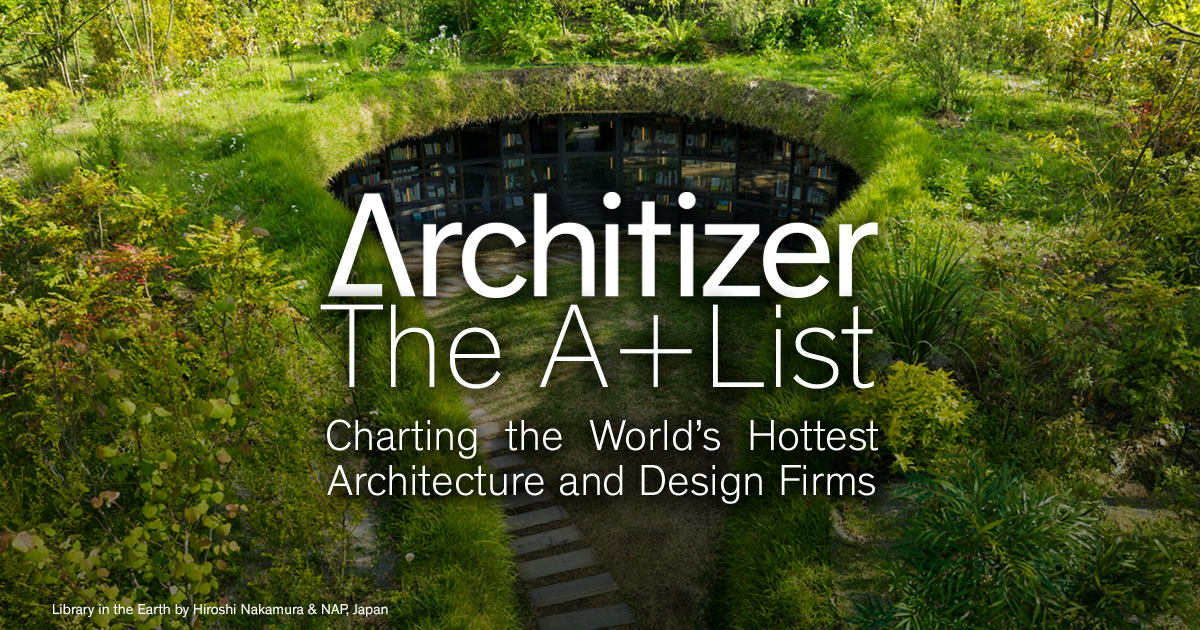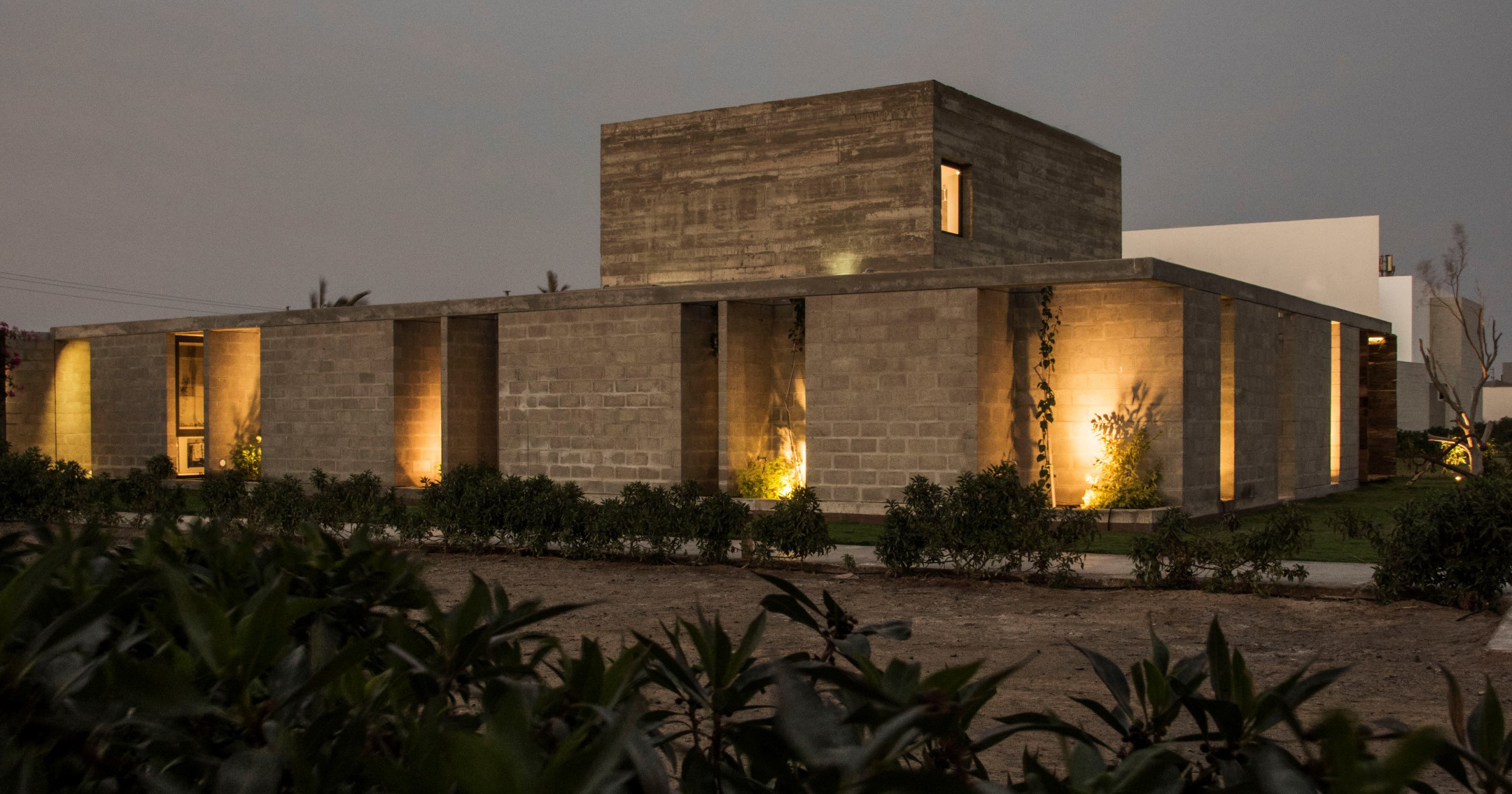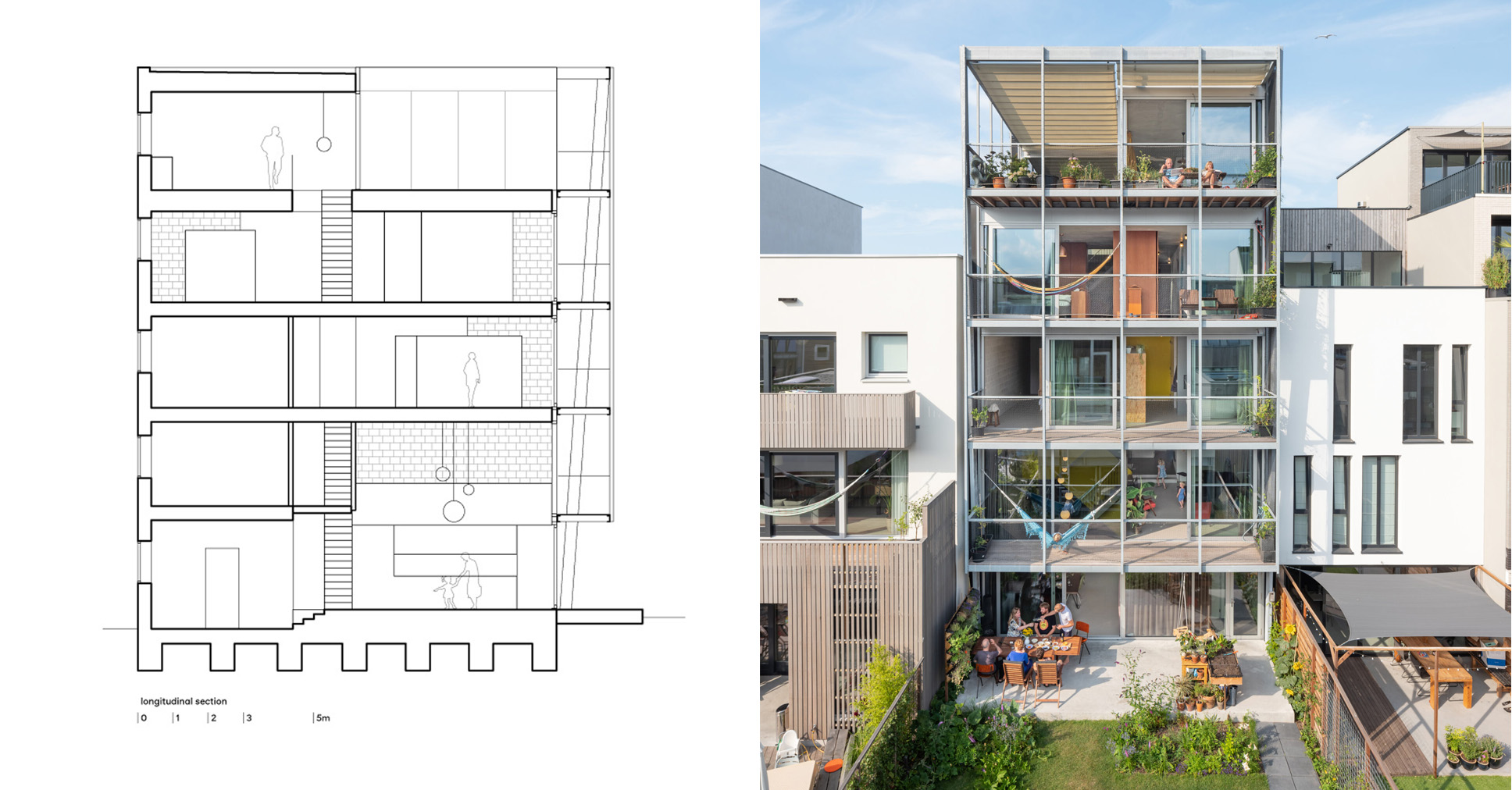Morocco rethinks earthen architecture in Venice pavilion


The future potential of earth as a building material was the focus of this year' soil-rich Morocco pavilion at this year's Venice Architecture Biennale.
Moroccan architects Khalil Morad El Ghilali and El Mehdi Belyasmine aimed to encourage visitors to consider how ancient earthen architecture and modern engineering could be combined in their pavilion named Materiae Palimpsest.

At the heart of the pavilion were 72 pillars made from various forms of soil –rammed earth, adobe, cob, stone and brick – all traditional building materials in different parts of the north African country.
Each of the pavilion's multi-material columns were made from prefabricated blocks held together with a post-tensioning system to squeeze the blocks together.
This post-tensioning system developed by El Ghilali with his practice Atelier Be was used to create buildings in Morocco that he claims withstood 2023's 6.9-magnitude earthquake, the strongest ever recorded in the country.

In his projects in Moroccan villages, El Ghilali focuses on using this system with rammed earth blocks, and says that multi-storey buildings can be created in this way if there is a stone foundation and basement to protect from floods and seismic activity.
"We can go high with this kind of building," he said. "We can build quick, and instead of just doing a building and then covering it with a fake texture, we can actually build with authenticity."

The 2023 earthquake primarily affected remote mountain villages, where there is a rich heritage of earthen construction to be protected.
El Ghilali believes that much of the knowledge and expertise for earthen construction is being lost.
"It was geniuses who created the forts of Rabat or Marrakesh or the old Medina of Fez," he continued.
"The problem that we're having right now is knowledge is getting lost, and the idea behind this [pavilion] is showcasing that we can go in with new techniques, not completely erasing the past but upgrading the past into something that can be resistant to one of the greatest earthquake that happened in the history of Morocco."
El Ghilali hopes to encourage others to blend ancient and contemporary knowhow with the aim of challenging the dominance of concrete, which he sees as a legacy of globalisation that has obliterated regional character.
"The idea that research is turning its back to different materialities and just focusing on one material – that is, concrete – is, for us, one of the biggest losses that we've lived through in the 20th century," El Ghilali told Dezeen.
"These norms are something that research needs to dig into."

While El Ghilali's work is specific to Morocco, he hopes the pavilion can be part of a broader discussion with architects from all over the world who are interested in learning from ancient techniques.
He said that Morocco is leading the way with building regulation around paraseismic engineering with local materials. The government has also, together with other Arab countries, submitted a proposal for earthen building traditions to be added to UNESCO's list of Intangible Cultural Heritage – two moves that should help to keep these forms of construction alive.

Several of this year's national pavilions have focused on soil, including Mexico and Turkey, which also presented lessons that can be drawn from ancient material approaches.
"That soil is present in a lot of pavilions is for, for me, a [sign of a] global consciousness that is starting to wake up, that we need maybe to go back to common sense," said El Ghilali.
"It's the natural intelligence and not just the artificial intelligence," he added, referencing the biennale theme of Intelligens Natural Artificial Collective.
"We really think that intelligence comes from architects, not from a top-down way, but from a bottom-up, where you just build with people. You cannot just come with drawings. You need to be able to do this by your hand so you can show to people how to do it."
Other national pavilions at this year's Biennale have explored themes of climate change, in the case of Germany; cooling architecture, in the case of Bahrain; the trans experience, in the case of the Nordic countries.
The Venice Architecture Biennale takes place from 10 May to 23 November 2025. See Dezeen Events Guide for all the latest information you need to know to attend the event, as well as a list of other architecture and design events taking place around the world.
Photography by Samuele Cherubini
The post Morocco rethinks earthen architecture in Venice pavilion appeared first on Dezeen.














